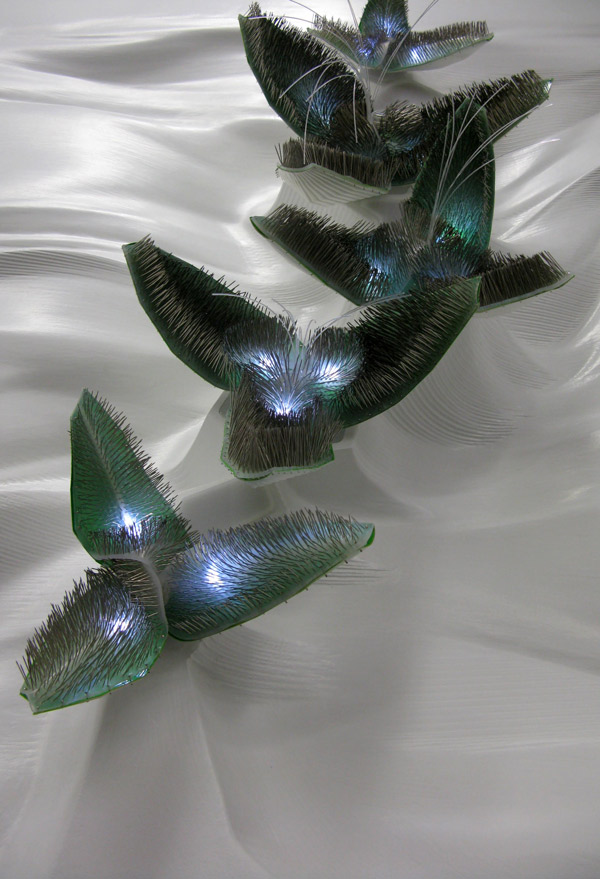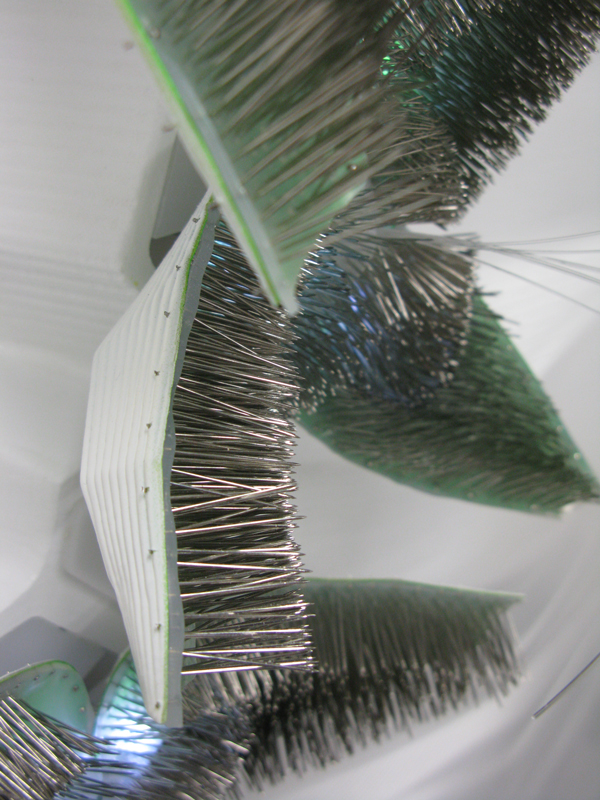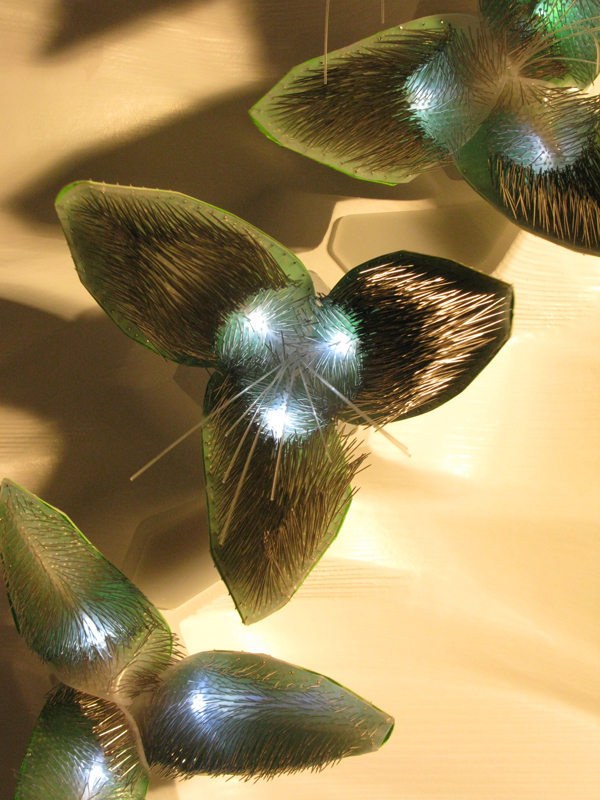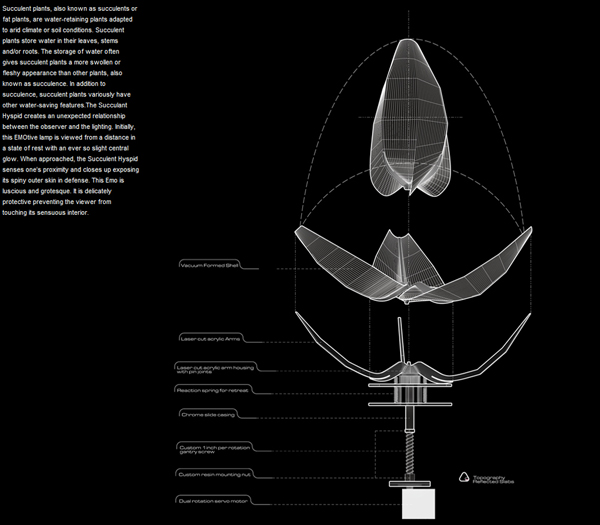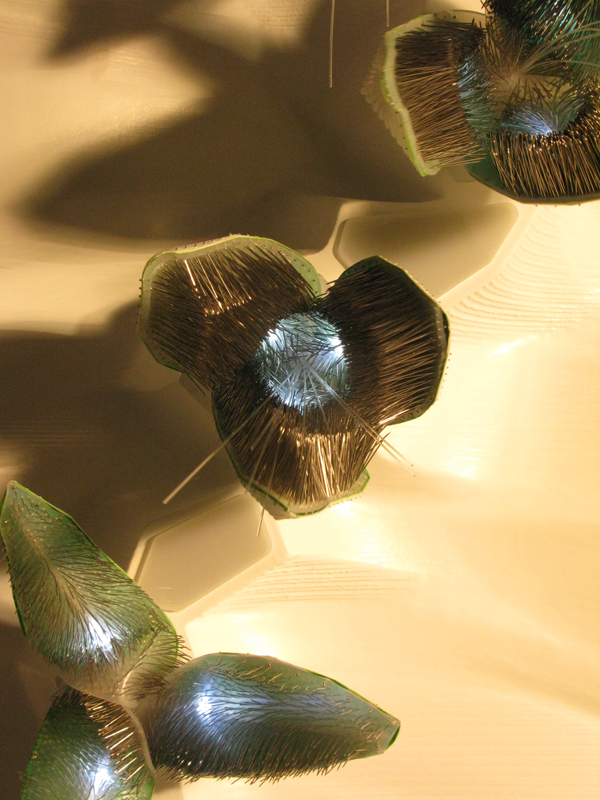The project explores principles of responsive structures, installations that interact with users through a combination of motion sensors and various other electronic components. The Succulent Hispid marries biological and technological mechanisms, evolving into a hybrid lighting system mimicing the movements of petals. It is inspired by succulent plants and their ability to retain water, thus adapting to arid climates or soil conditions. Designed by UCLA students Harlen Miller, Francesco Valente-Gorjup and Jordon Gearhart, the installation is an emotionally charged, interactive, electro-material object.
The petals are made of plastic, with acrylic substructure and silicone membrane lining. The surfaces are covered with metal pin hairs. Combined with silicone inflatable bladders, they hide the LED lights that emanate a central glow. When approached, the Succulent Hispid senses one’s proximity and closes up, exposing its outer skin in defence.
Among other studio projects, the Succulent Hispid explores different manufacturing techniques such as 3D printing, lasercutting, milling, vacuum forming, casting and various molding methods. It also researches computer controlled robotic movement, LED lighting and sensor technologies in order to introduce interactivity and kinetics to the structure. Instead of focusing on a single material or manufacturing technology the students worked on the problems involved in combining a multiplicity of technologies and materials into sensible electro-material wholes.

